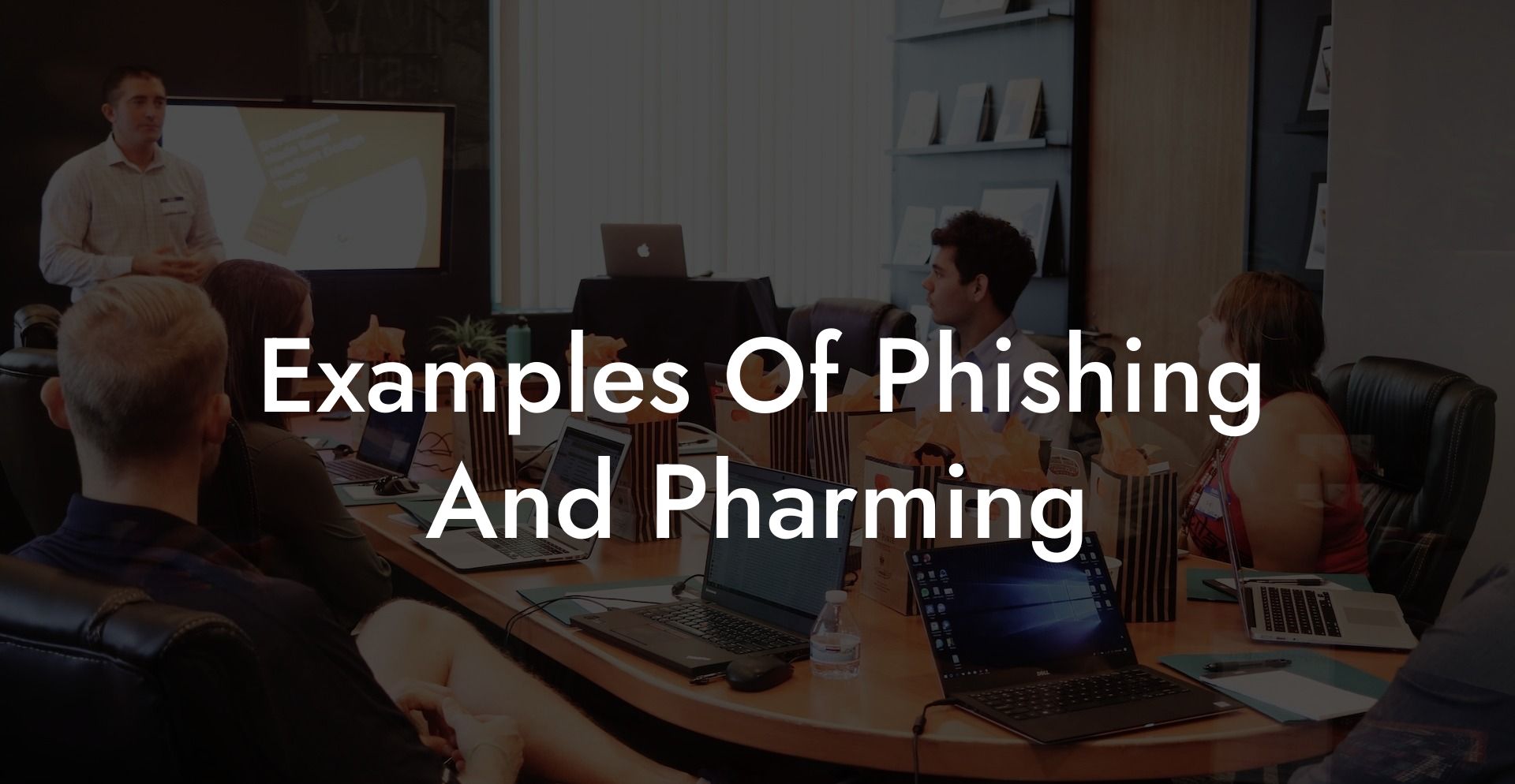In today's fast-paced digital world, online security is of the utmost importance. As technology advances, so do the malicious tactics employed by cybercriminals to prey on unsuspecting users. Voice phishing, also known as "vishing," is one such tactic that has gained popularity over the years. Coupled with pharming, a technique used to redirect web traffic to fake websites, these scams put users' personal information and finances at risk. This comprehensive guide will explore examples of phishing and pharming schemes to help you recognize and avoid falling victim to these threats.
Examples Of Phishing And Pharming Table of Contents
Phishing refers to any attempt by cybercriminals to trick unsuspecting users into disclosing their sensitive information, such as passwords or credit card numbers, by sending seemingly credible emails or messages. On the other hand, pharming attacks involve manipulating users' domain name system (DNS) settings to redirect them to fake websites that closely resemble legitimate ones. Both methods aim to steal data and exploit it to perpetrate identity theft or other financial fraud.
1. Clone Phishing
Protect Your Data Today With a Secure Password Manager. Our Top Password Managers:
Clone phishing involves sending an identical copy of a legitimate email but with malicious links or attachments. In a typical example, you might receive an email that appears to come from your bank or internet service provider, requesting an urgent update to your personal or financial information. If you click on the embedded link or download the attached file, you could unknowingly install malware on your device or hand over your login details to the scammers.
2. Spear Phishing
Spear phishing targets specific individuals or organizations by tailoring the scams to their interests or habits. Cybercriminals often gather intel on their victims through social media platforms and professional networking sites. A common scenario involves the victim receiving an email supposedly from a familiar contact, encouraging them to view an interesting article or video. The email will contain a link or attachment that, if clicked or downloaded, will give the attacker access to the victim's personal data.
3. Voice Phishing (Vishing)
Vishing scams employ voice communication – usually telephone calls from spoofed numbers – to extract sensitive information. In a typical vishing attack, the caller may pose as a representative from your bank or credit card company, claiming there's an issue with your account that needs immediate attention. They will ask for your account number, PIN, or other crucial details to "verify your identity" or "resolve the problem," ultimately using the information to defraud you.
4. Smishing (SMS Phishing)
Smishing occurs when cybercriminals send text messages to victims, enticing them to follow a malicious link or contact a fraudulent phone number. Smishing messages may appear to come from a reputable organization, offering incentives like free gift cards or notifying recipients of an overdue bill. Once a victim engages with the link or the phone number, they risk exposing their personal or financial data.
5. Pharming
Pharming attacks take phishing to another level by exploiting vulnerabilities in DNS settings. When successful, these attacks redirect victims away from the legitimate website they intended to visit and towards a counterfeit version. There, the scammers can harvest any login credentials or personal information the user enters. Pharming can be especially challenging to detect because the fake website can appear identical to the original one and even display the correct URL.
Education and vigilance are key to combating phishing and pharming attacks. Be wary of any unsolicited emails, calls, or text messages that appear suspicious or request sensitive information. Keep your devices updated with the latest security patches and utilize strong, unique passwords for your online accounts. By being aware of the methods employed by cybercriminals and knowing the red flags to look for, you will be better equipped to safeguard your digital life.
If you found this article helpful, please share it with friends and family to help them stay protected too. Be sure to explore our other comprehensive guides on Voice Phishing to stay informed and vigilant against these ever-evolving threats.
Protect Your Data Today With a Secure Password Manager. Our Top Password Managers:















